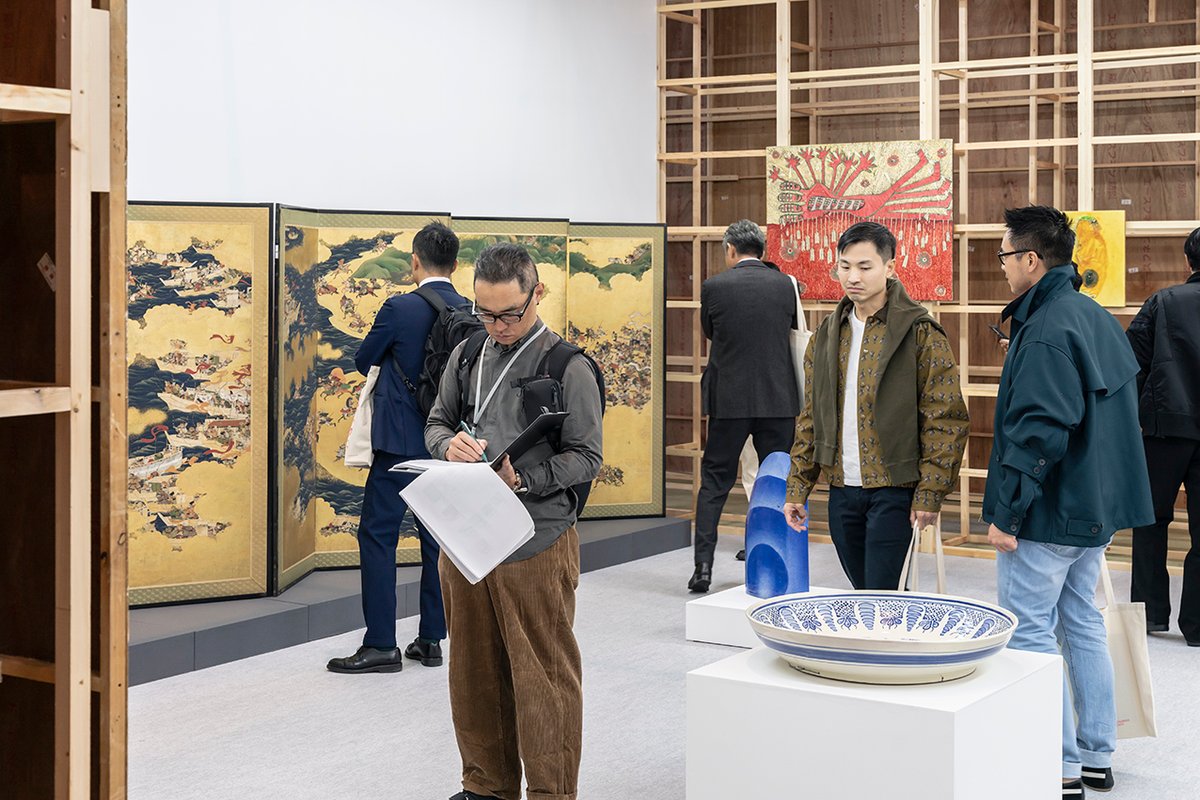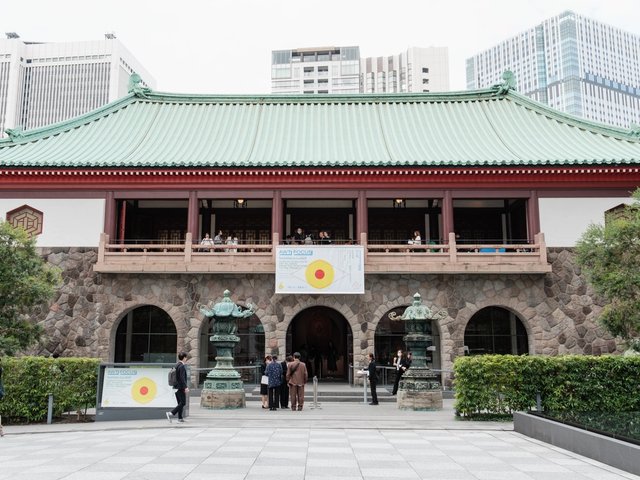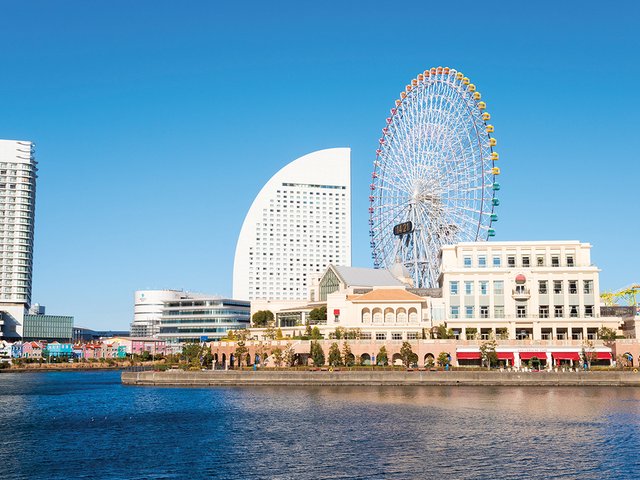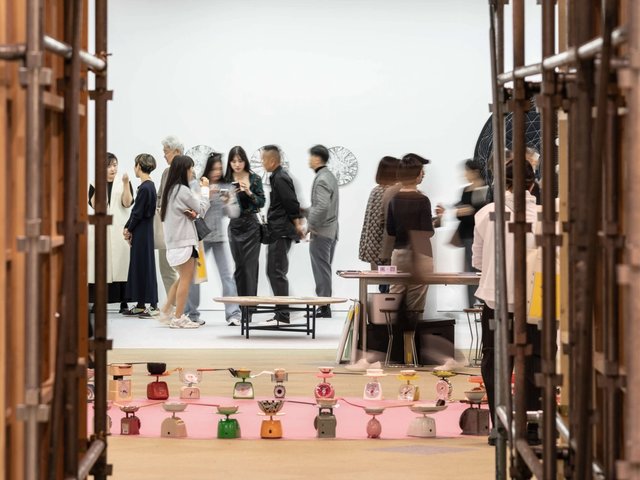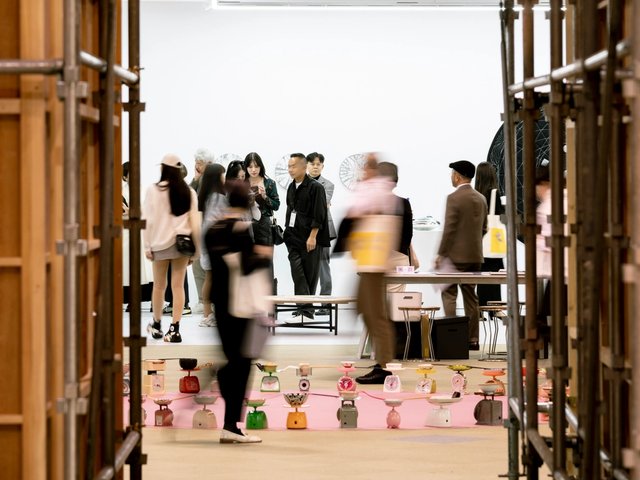The fourth edition of Art Collaboration Kyoto (ACK, until 3 November)—an unusual fair in which Japanese galleries invite international ones to share stands—makes clear that the ancient city is attempting to establishing itself as a centre for contemporary art.
Japan’s Agency for Cultural Affairs (ACA), which is one of the funders of the fair, last year moved more than half of its staff from Tokyo to Kyoto, its director Yasuta Hayashi tells The Art Newspaper. "This is part of a regional revitalisation that focuses on Kyoto as a cultural capital. Therefore it is important to have a second place of culture. And there is a big difference between the two."
Both the fair, which this year has 27 booths and 56 galleries in its main Collaborations section plus 13 in its Meetings section, and its satellite exhibitions highlight how the 1,230-year-old city leans into its heritage, with even its contemporary art grounded in legacy artistry. Sculptural works such as Akiyama Yō’s clay works, brought to the fair by Osaka’s Artcourt Gallery, were particularly prominent in this edition. "Japan has a long tradition of heritage crafts, passed down intergenerationally, and there are more artists here using them even in contemporary art," Hayashi says, creating a "dialogue with the past".
The amount of ACK’s satellite shows in city temples and other historic buildings has doubled from last year—from two to four. These included Andreas Eriksson’s moody, Kyoto-inspired paintings at Murin-an, the site where Japanese leaders in 1903 discussed Japan's foreign policy towards Russia, which would soon crescendo to war and in further imperial ambitions. Eriksson’s Kyoto series was also showing at the fair, at the stand of Berlin gallery Neugerriemschneider in Kyoto Meetings, a 13-gallery section for galleries from the city or for artists with some connection to Kyoto.
"Splendid" and "beautiful" are two words that Neugerriemschneider's cofounder Tim Neuger used to describe the fair on opening day. Kyoto is a "decelerating time machine" and a "symbol of art, nature and culture", he said, adding that ACK itself is "different to other fairs, and is more about meeting, and collegiality". While declining to comment on specific sales, Neuger indicated that things were going well. Asked if he would return for a third year, he enthusiastically responded, “yes!”
Kyoto’s heritage craft roots are prominently displayed at Kyoto’s Yumekoubou Gallery booth, also in Kyoto Conversations. It is showing Nishihisamatsu Yuka’s eccentric ceramic sculptures. One of the eight local galleries exhibiting at ACK, Yumekoubou has been operating for almost 30 years, and has grown out of a family-owned antiques business. Joining the fair for the first time and tucked near the back, sales were slower than they had expected, said sales manager Fumie Matsuura on opening day. “But we have met a lot of people, over 100, and several showed possible interest.” A frequently heard observation was that Japanese collectors generally like to take their time to get to know artists and galleries. Matsuura says ACK has been a big boon to local galleries. “It is the biggest in Kyoto, its impact is big, and it brings a lot of foreign guests in.”
For Chris Sharp, the owner and director of Los Angeles’ Chris Sharp Gallery, ACK had brought him to Japan for the first time. Joining forces with Osaka’s Yoshiaki Inoue Gallery, an introduction made by Jeffery Rosen of Tokyo’s Misako & Rosen Gallery, the booth’s offerings include geometric works made from oil stick on found paper, by Sean Sullivan, for $4,500 each. And Glenn Goldberg’s acrylic and pencil on canvas works, for $7,500 each. Two sales were completed on day one, with “others cooking", Sharp said. The fair is "perfect, with low stakes, and my impression is that it’s less about sales than content", Sharp adds. "It’s nuanced and exciting. Being in Kyoto is a draw—it is so cool, a magical place".
Other sales include a Yui Yaegashi diptych selling to a young Japanese collector for $11,000, Misako & Rosen reported. Tomio Kayama Gallery said it placed an oil on canvas by Koji Nakazono with a Japanese collector for around 2m Japanese yen to a Japanese collector, and two crayon and oil pastel on wood panels by Koji Nakazono each bought for about 800,000 to 900,000 Japanese yen ($5,230-$5,880) by collectors from China and Japan. Seoul’s Johyun Gallery reported some of the biggest sales of the first two days, including a Korean hanji paper on canvas work by Park Seo-Bo, in the range of $450,000 to $500,000. It also reported sales of seven Lee Bae charcoal on canvas and bronze works ranging between $60,000 to $65,000, plus two more bronzes for between $30,000 to $35,000.
The fair’s curated section this year was titled “Resislience” and invited the Hong Kong duo Arts Collective, comprised of Chin-Yin Chong and André Chan. Bringing a lighter spirit to the presentation, they thronged the entrance with marble trash sculptures by Japanese collective Chim↑Pom from Smappa!Group and with the hanging laundry of Taiwan-based Hongkonger Lee Kit. Lee’s t-shirts were emblazoned with the opaque slogans "Progressive Failure" and "He was the problem". Selling hundreds out quickly for 8,250 yen ($54) each at Tokyo’s ShugoArts, they "derive from a poem and reference male/female relations", said one of the gallery's staff members, Chaoqun Zhu.
ACK is organised by Kyoto Prefecture, the Association for the Promotion of Contemporary Art in Japan, the Contemporary Art Dealers Association Nippon (CADAN), Culture Vision Japan Foundation, Inc, the Kyoto Chamber of Commerce and Industry, and the Kyoto Convention and Visitors Bureau. It furthermore receives 10.8m yen (US$65,496) in support from the ACA, Hayashi says. The ACA also last year spent 300m yen of a 557m yen budget for establishing and promoting Japan as a global cultural hub, including art and music, and part of that helps fund Art Week Tokyo. This year, that broad budget was cut 100m to 466m yen.
Hayashi anticipates that arts investment will remain a priority for Japan’s government, even after Japan’s 27 October snap House of Representatives elections saw the Liberal Democratic Party, which has governed Japan almost continuously since 1955, lose its majority after a corruption scandal.
“We do not know what might change at this point, the agency will just need to explain art to the new government," Hayashi says. He considers art to be a way to balance Japan’s worsening overtourism, fueled by the weak currency exchange rates. “The people coming in internationally for contemporary art are not your stereotypical tourists. They may consume less but they are more interested in Japanese culture in a deeper way,” Hayashi says. “We want to attract more of these kinds of visitors. Depending on the regions, there are very different kinds of cultures in Japan, and contemporary art can be a valuable interaction with regional cultures.”


